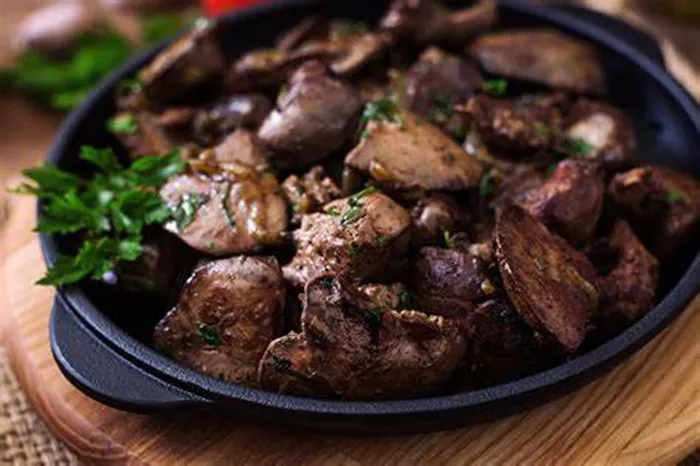Liver may not be the first thing that comes to mind when you think of a delicious meal, but this often-overlooked organ meat is packed with an array of health benefits that might make you reconsider.
For centuries, people have been consuming liver, a food that has deep roots in culinary traditions. “Liver and onions is a classic dish that dates back to the Middle Ages in Europe,” says Christiane Matey, R.D.N., founder of MINT Nutrition. The French have further refined the preparation of liver in gourmet dishes like seared foie gras and Paté en croute, commonly found on fine dining menus.
“It has long been regarded as a superfood, especially in the realm of physical performance. In the 1930s, bodybuilders praised beef liver for its positive effects on physique and physical endurance,” explains Sarah Alsing, R.D., owner of Delightfully Fueled. “The carnivore diet today continues to promote liver as a key food.”
Why You Should Consider Adding Liver to Your Diet
While its taste may be an acquired one, liver offers numerous health benefits that make it worth considering.
Among all organ meats, liver stands out as the most nutrient-dense, according to Matey. It’s a rich source of high-quality protein, healthy fats, and a burst of umami flavor. More importantly, liver is packed with essential nutrients:
Vitamin B12
The National Institutes of Health (NIH) identifies beef liver as the richest source of vitamin B12, with a mere three ounces of pan-fried beef liver meeting your entire daily requirement. “Vitamin B12 plays a crucial role in athletic performance by supporting red blood cell production, which increases oxygen supply to muscles, enhances nerve function, and aids in protein synthesis,” says Alsing. Research supports that higher vitamin B12 levels correlate with increased hemoglobin levels, improving oxygen delivery to muscles.
Vitamin A
Beef liver is also an outstanding source of vitamin A, providing all the daily value you need in just three ounces. “Vitamin A is commonly linked to vision support, but it also contributes to immune function, cell growth, and reproduction,” Alsing explains. “It’s essential in wound healing and combating oxidative stress, which is vital for physical performance. A deficiency can lead to oxidative damage, particularly in competitive athletes.”
However, both Alsing and Matey caution that excessive vitamin A intake can be harmful. Therefore, liver may not be suitable for everyone, particularly individuals with gout, hemochromatosis, vitamin A toxicity, or high cholesterol. It’s important to consult with a healthcare provider to determine the appropriate amount for your diet.
Folate
Once again, beef liver ranks supreme on the NIH’s fact sheet, this time as the best source of folate, providing 54% of the daily value in just three ounces of braised liver. “Folate is key for athletic performance because of its role in red blood cell production, which enhances oxygen delivery to muscles during exercise,” Alsing says.
Liver also delivers a substantial dose of iron, potassium, sodium, selenium, zinc, copper, phosphorus, and B vitamins. Additionally, it contains various bioactive compounds, such as L-carnitine, creatine, carnosine, coenzyme Q10, glutathione, conjugated linoleic acid, taurine, and peptides, which offer numerous health benefits. These include antioxidant and anti-inflammatory effects, improved metabolism, blood glucose regulation, and immune support.
Furthermore, organ meats are one of the more affordable sources of nutrient-rich protein, notes Alsing.
Making Liver More Palatable
Liver’s distinctive taste isn’t for everyone, but proper preparation can make it more enjoyable. Alsing describes liver’s flavor as “earthy,” and recommends soaking it in milk for at least 30 minutes to mellow the taste. “Season the liver with flavors you enjoy before pan-frying,” she advises. If the idea of eating liver on its own doesn’t appeal to you, consider incorporating it into dishes like chili. “The mix of beans and tomato sauce can mask liver’s taste,” she suggests.
Another approach is to sneak liver into your favorite recipes, such as bolognese, meatballs, meatloaf, burgers, or tacos. “You won’t even know it’s there,” Matey assures.
Alternatives to Liver with Similar Nutrient Profiles
If liver isn’t your thing, you might be reluctant to try other organ meats. However, they remain your best option for similar nutritional benefits. Matey points out that due to liver’s dense nutrient profile, substitutes are hard to find. However, other red offal meats like kidney, heart, tongue, and sweetbreads (pancreas, thymus) offer comparable nutrients with a milder flavor.For a plant-based alternative, Matey recommends seitan, a protein-rich food made from wheat gluten that mimics the umami flavor of beef liver. While other proteins like eggs, meat, and fish are good sources of similar nutrients, they don’t offer the same comprehensive benefits as liver. “Consuming a variety of protein sources will help you get these nutrients if you choose to avoid liver,” Matey concludes.
[inline_related_posts title=”You Might Be Interested In” title_align=”left” style=”list” number=”6″ align=”none” ids=”11174,11169,10937″ by=”categories” orderby=”rand” order=”DESC” hide_thumb=”no” thumb_right=”no” views=”no” date=”yes” grid_columns=”2″ post_type=”” tax=””]


































